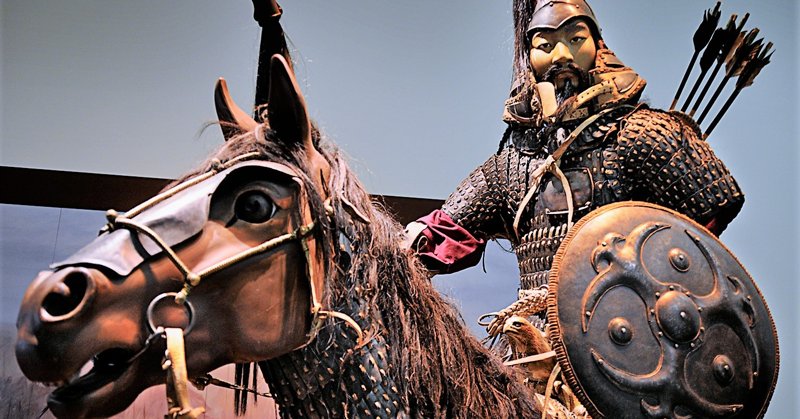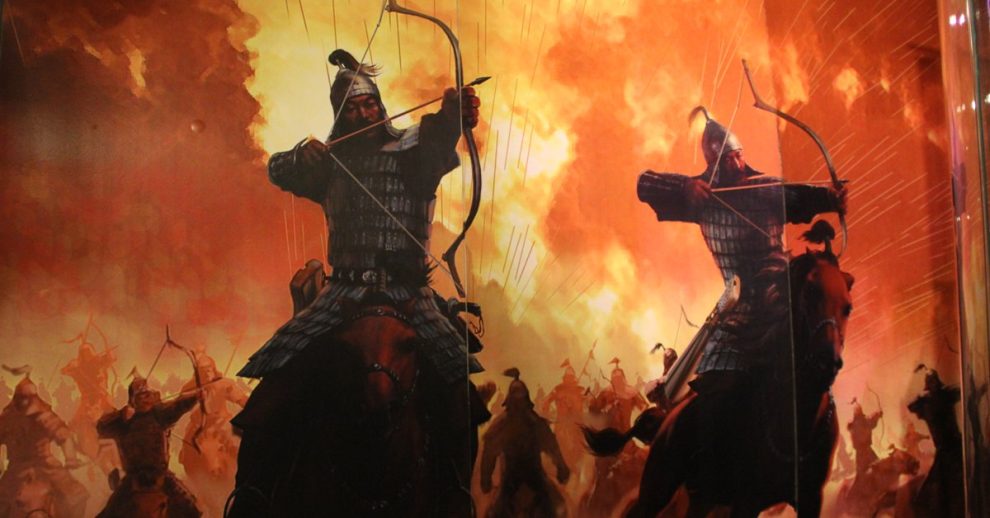The Mongols were fierce nomads from the Central Asian steppes who rose to build the largest land empire in history. Led by Genghis Khan, they used speed, strategy, and fear to dominate continents. But behind the bloodshed was a complex world of diplomacy, innovation, and ambition.Here are 25 wild facts that reveal the brutal genius of the Mongol Empire.
Genghis Khan’s Early Struggles

1. After the murder of his father, Genghis Khan endured extreme poverty and even faced enslavement. Despite these hardships, he rose to power in his 50s and became the Khan of Mongolia. His leadership marked the beginning of one of history’s most formidable empires.
2. After uniting the Mongol tribes, Genghis Khan sought peace and trade by sending emissaries to Muhammad II of Khwarezm. However, when the Khwarezm Empire killed the Mongolian envoys, a furious Genghis Khan launched a campaign that demolished the Khwarezmian Empire within two years.
3. Following the sack of Baghdad, the Mongols captured the Caliph, who believed his royal and religious status would protect him from bloodshed as mongols strongly had a superstition that spilling royal blood would lead to great disaster. Adhering to their customs, the Mongols wrapped him in a rug and trampled him to death.
4. Stone castles proved highly effective against the Mongols during their invasions of Hungary. Despite their efforts, the Mongols sustained heavy casualties and failed to capture a single castle.
5. Genghis Khan strategically married his daughters to kings of allied nations. He then assigned these new sons-in-law to military duties in the Mongol wars, where many perished. As a result, his daughters gained complete control over these nations, expanding Mongol influence through marriage.
6. Ögedei Khan, the second Mongol Khan, was notorious for his alcoholism. His brother Chagatai assigned an official to monitor his drinking. Ögedei promised to reduce the number of cups he drank daily. However, he cleverly circumvented this by commissioning larger cups for personal use.
7. The Chinese city of Fancheng resisted Mongol forces for nearly six years. The city finally fell when Kublai Khan’s nephew brought in Muslim engineers from Iran, who built counterweight trebuchets with a range of 1,600 feet, launching 660-pound projectiles. This technological advantage led to the city’s rapid downfall.
8. Mongol warriors wore silk vests as a form of protection. When arrows struck, the silk did not break but instead wrapped around the arrow, embedding it in the flesh. This allowed warriors to remove arrows by gently teasing the silk open.
9. The Silk Road city of Merv in Turkmenistan was once the world’s largest city during the 12th and 13th centuries, with a population exceeding 500,000. In 1221, the Mongols decimated the city in one of history’s worst genocides.
10. When the Mongols defeated the Poles at the Battle of Legnica in 1241, they beheaded King Henry II and paraded his head as a grim trophy. His wife, unable to recognize his face, identified his mutilated body by his unique eleventh toe.
Mongol Archery Innovation

11. Under Genghis Khan’s rule, Mongol archers innovatively used their thumbs to pull bowstrings, unlike the “Mediterranean draw” of three fingers. To protect their thumbs, they invented the “thumb ring,” which became a crucial tool in their arsenal.
12. The Soviet Union actively sought to suppress Genghis Khan’s legacy in Mongolia by removing his story from school textbooks. Additionally, they forbade pilgrimages to his birthplace.
13. Khutulun, a Mongolian noblewoman, made a unique pact with her father, declaring she would only marry a man who could defeat her in wrestling. Any unsuccessful suitor had to gift her 100 horses, and she reportedly amassed over 10,000 horses from her victories.
14. The Mongol army attempted to invade Japan twice, but both times, powerful storms, known as “Kamikaze winds” thwarted their efforts. These storms crippled the Mongol forces, preserving Japan’s sovereignty. The term “Kamikaze” later became symbolic of divine intervention in Japanese history.
15. Despite often being outnumbered, the Mongols achieved victory in many battles through clever deception. They employed tactics such as mounting dummies on horses and tying sticks to horses’ tails to create dust storms, misleading their enemies.
16. During the 14th-century bubonic plague epidemic, the Mongol army resorted to an early form of biological warfare. They catapulted infected corpses over city walls to weaken their enemies before invading. This grim tactic is considered one of the first instances of using biological weapon in warfare.
17. In 1258, the Mongols devastated Baghdad, marking a tragic end to the Islamic Golden Age. Survivors recounted how “the waters of the Tigris ran black with ink from the enormous quantities of books flung into the river and red from the blood of the scientists and philosophers killed.”
18. The Ikh Khorig, or Great Taboo, is a mysterious area in Mongolia believed to contain Genghis Khan’s final resting place. For centuries, elite guards and their descendants protected this sacred site, and it remained closed to archaeologists until 1989.
19. Subotai, the primary general under Genghis Khan, played a pivotal role in the Mongolian conquest of Asia. He directed over twenty campaigns, conquering thirty-two nations and winning sixty-five pitched battles. His unparalleled strategic genius enabled him to conquer more territory than any other commander in history.
20. Genghis Khan’s conquests led to the deaths of an estimated 40 million people, significantly affecting the planet’s climate. The Mongol invasions reduced the global population, which in turn allowed forests to regrow and absorb approximately 700 million tons of carbon dioxide from the atmosphere. Consequently, this unintended consequence effectively cooled the planet, showcasing a rare instance of man-made climate change using brutality.
Yelu Chucai’s Strategic Advice

21. Genghis Khan’s chief adviser, Yelu Chucai, was a captured scholar who played a crucial role in the Mongol Empire. He advised the Mongols to tax conquered peoples instead of killing them, which proved to be a more sustainable strategy for empire building. This approach not only increased the empire’s wealth but also helped maintain stability across the vast territories under Mongol control.
22. Genghis Khan established an institution that guaranteed complete religious freedom within the Mongol Empire. Despite being a Tengrist, a religion originating from the Eurasian steppes, he recognized the importance of religious tolerance.
23. In 1254 C.E., Mongol Great Khan Möngke organized a formal interfaith debate at his court, inviting teams of Christians, Muslims, and Buddhists to argue their beliefs in structured rounds. While the event reflected the Mongols’ unusual tolerance and curiosity about world religions, it ended without a clear victor-most participants became too drunk to continue.
24. In 1260, a 10,000-strong Mongol force was annihilated by Egyptian Mamluks at the Battle of Ain Jalut after falling for a classic feigned retreat-ironically, a favorite Mongol strategy.
25. In the 1270s, Ivaylo-nicknamed “the Lettuce”-was a Bulgarian swineherd who rose from obscurity to lead a peasant revolt. Outraged by repeated Mongol raids in northeastern Bulgaria under the rule of Mongol leader Nogai Khan, Ivaylo rallied the peasantry and defeated the invaders. He overthrew Tsar Constantine Tikh in 1278 to seize the Bulgarian throne, later defeating the Mongols again and winning three battles against the Byzantines in a remarkable two-front campaign.
Sources: 1, 2, 3, 4, 5, 6, 7, 8, 9, 10, 11, 12, 13, 14, 15, 16, 17, 18, 19, 20, 21, 22, 23, 24, 25









Add Comment